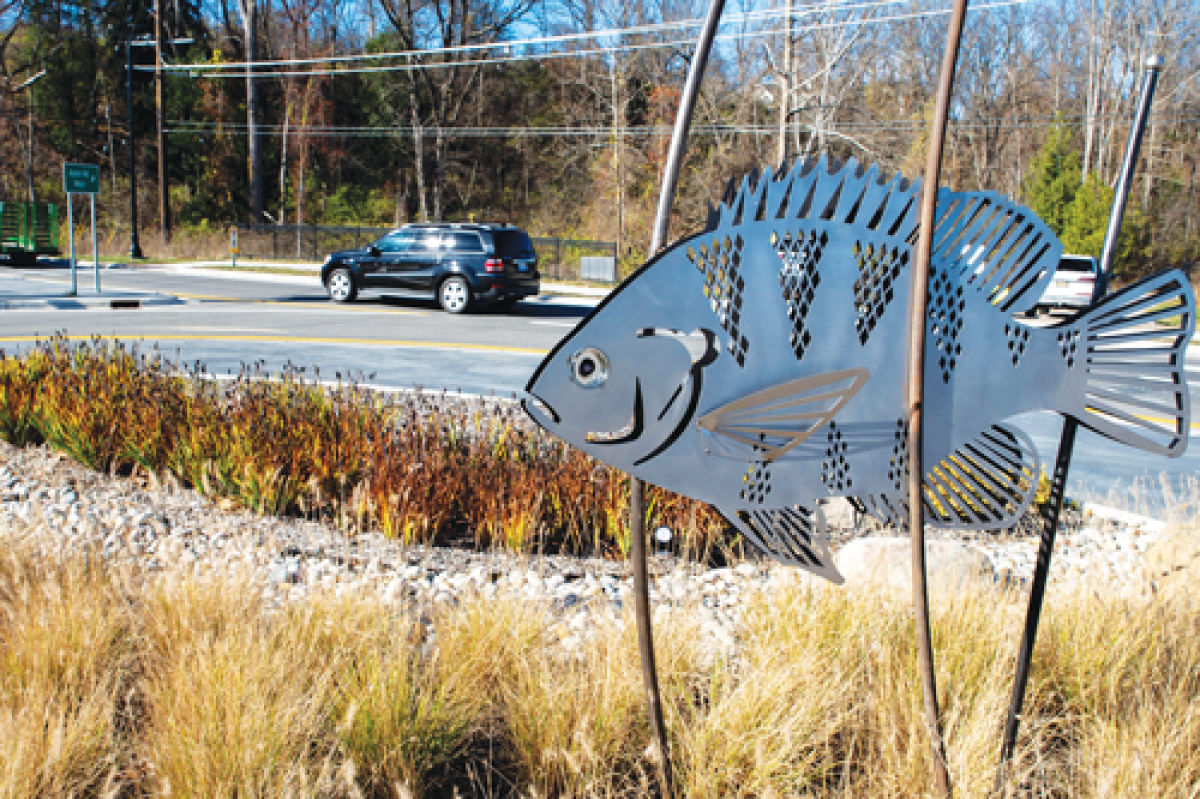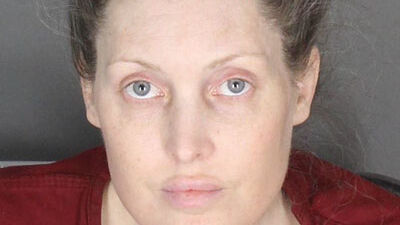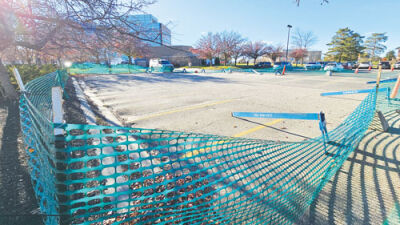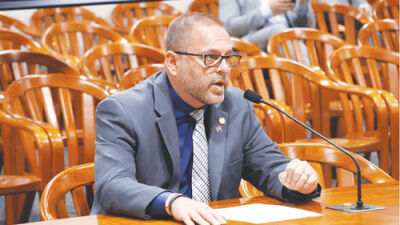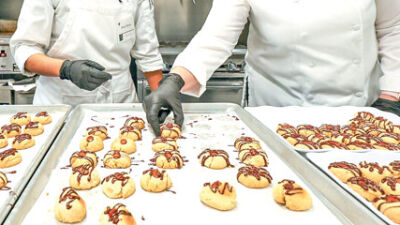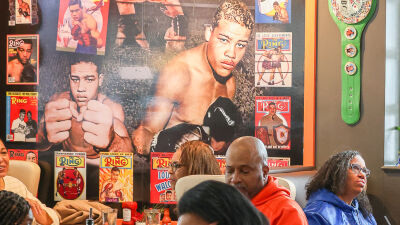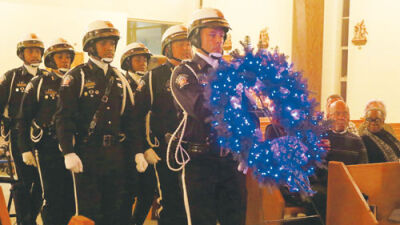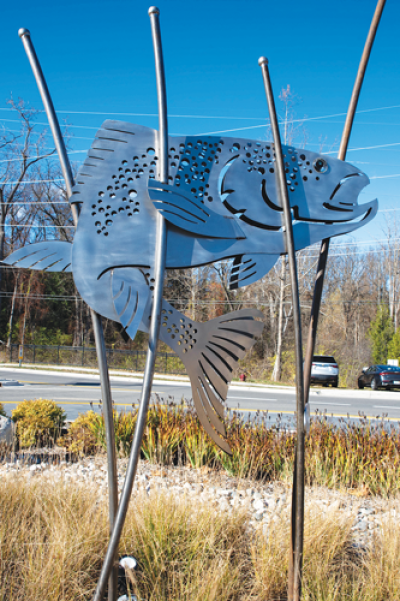
A new fish sculpture graces the center of the roundabout at Avon and Dequindre.
Photo provided by the city of Rochester Hills
ROCHESTER HILLS — The city has added some fresh public art — in the form of three fish sculptures — to the roundabout at Avon and Dequindre roads, near Yates Cider Mill.
“It’s been getting a lot of great conversation, a lot of great responses,” said Rochester Hills Mayor Bryan Barnett.
City officials say the sculptures pay tribute to the city’s history and what makes the region unique, and gives the city a chance to add more art into the community.
“It’s something that we’ve been trying to do over the last few years — adding art down at the Brooklands Plaza, up and down the street there, and different aspects of the city, but here, in a really pronounced pretty cool way in the center of one of our roundabouts,” Barnett said.
Sara Roediger, the city’s director of planning and economic development, said Rochester Hills hopes to add more art throughout the city and this was one way to accomplish that.
“The fish sculptures contain the three of the most common fish found in the Clinton River there — bass, brown trout and blue gill,” Roediger said.
The sculptures, she added, were created by Erik and Israel Nordin, from the Detroit Design Center, who have done a number of public sculptures in metro Detroit.
Yates is the oldest business in the city, Barnett explained, starting when Abraham Lincoln was president.
“Yates is powered by the Clinton River and all three of these fish can be found in the river itself,” he said.“We have a blue gill, a trout and a largemouth bass all there in the roundabout and, as the grasses grow, it will actually look like they are in the river. The grasses will go right up to the base of the fish.”
Barnett encouraged residents to check out the art as they travel around the city or visit Yates.
“We hope as you drive around town — very safely of course, maybe the next time you’re at Yates Cider Mill or Yates Park in the city of Rochester Hills. You (can) check out these three fish and now you know a little bit more about why they’re here in this spot,” Barnett said. “We love art and we love our residents taking notice.”
 Publication select ▼
Publication select ▼